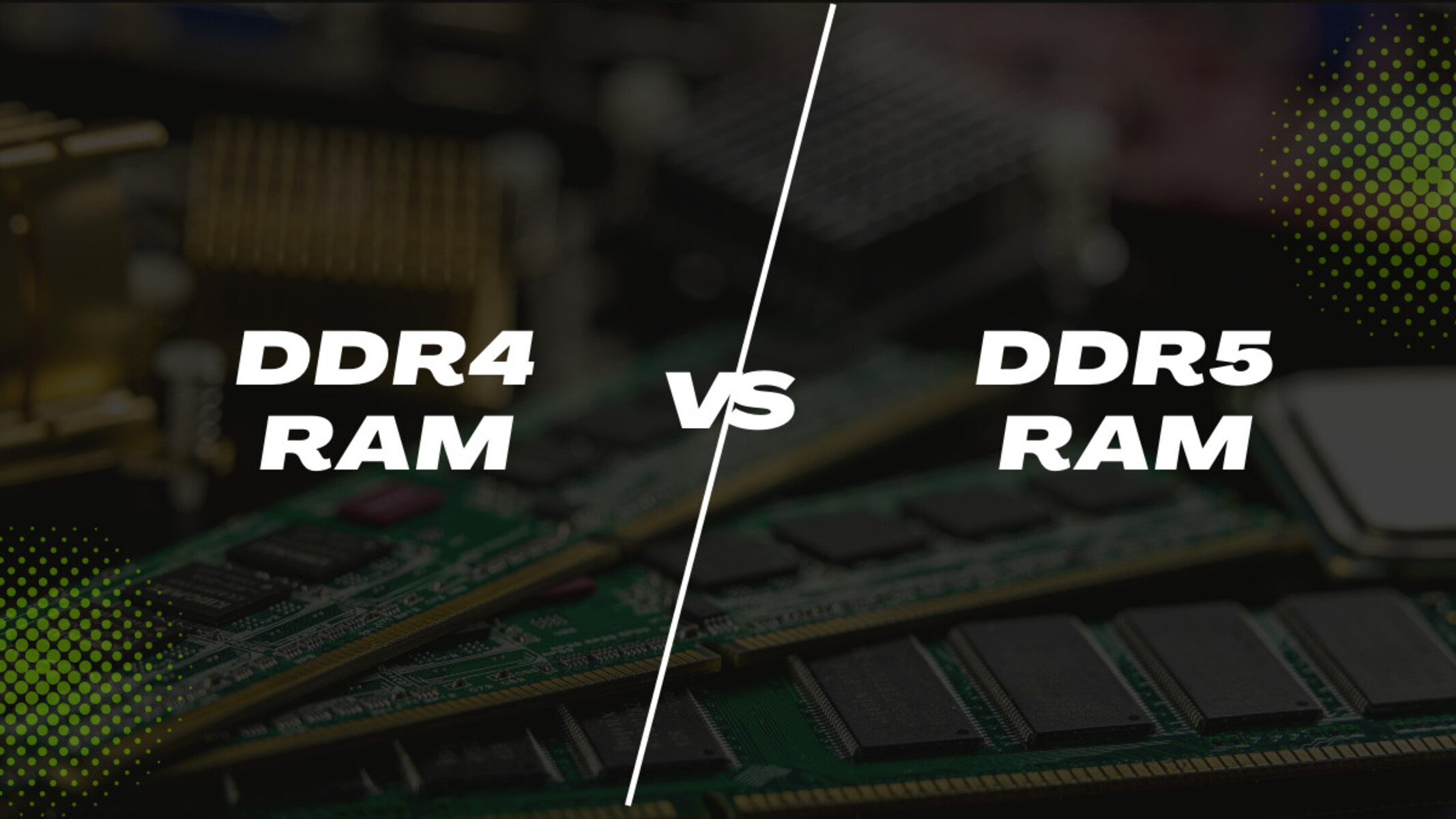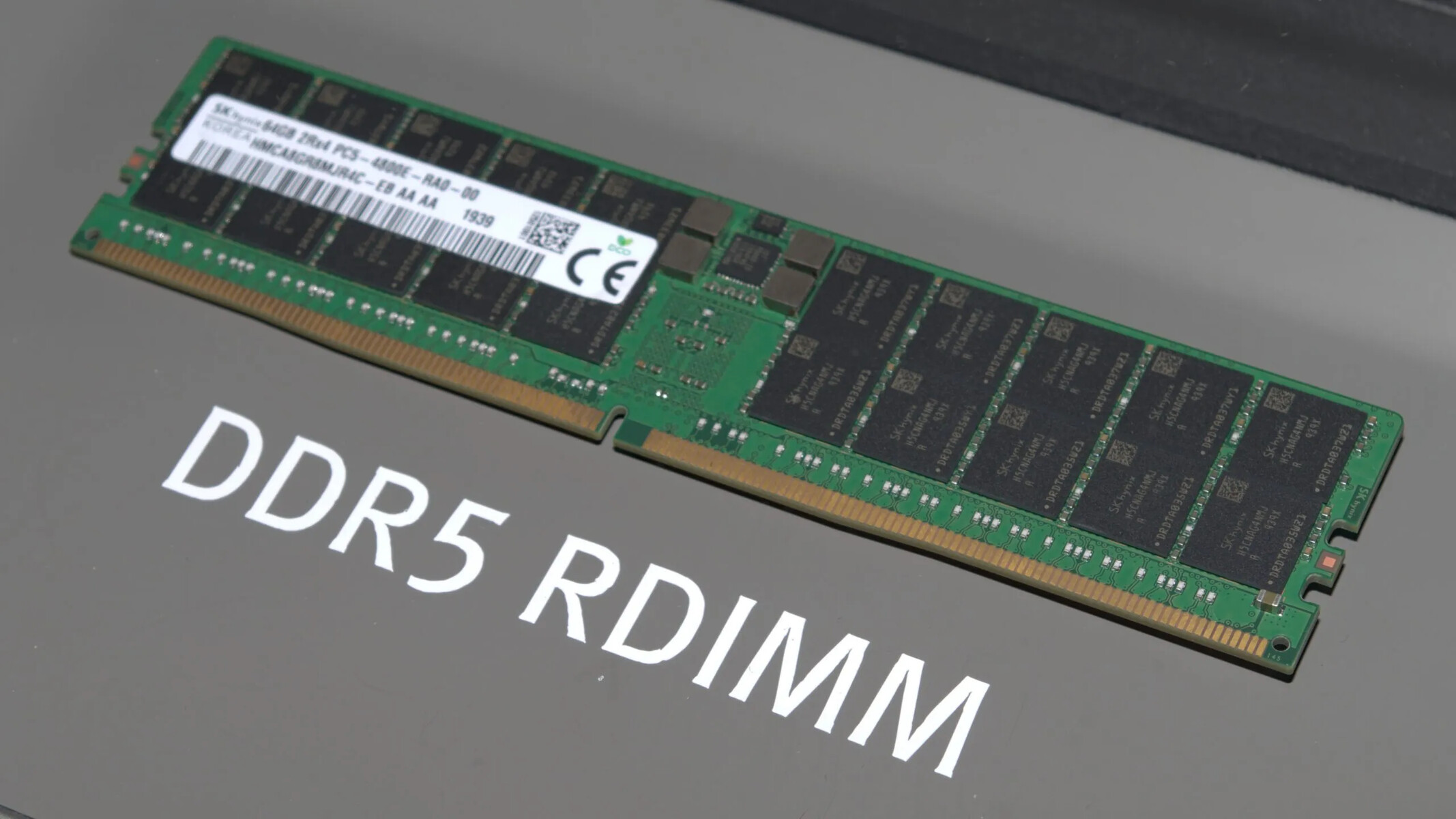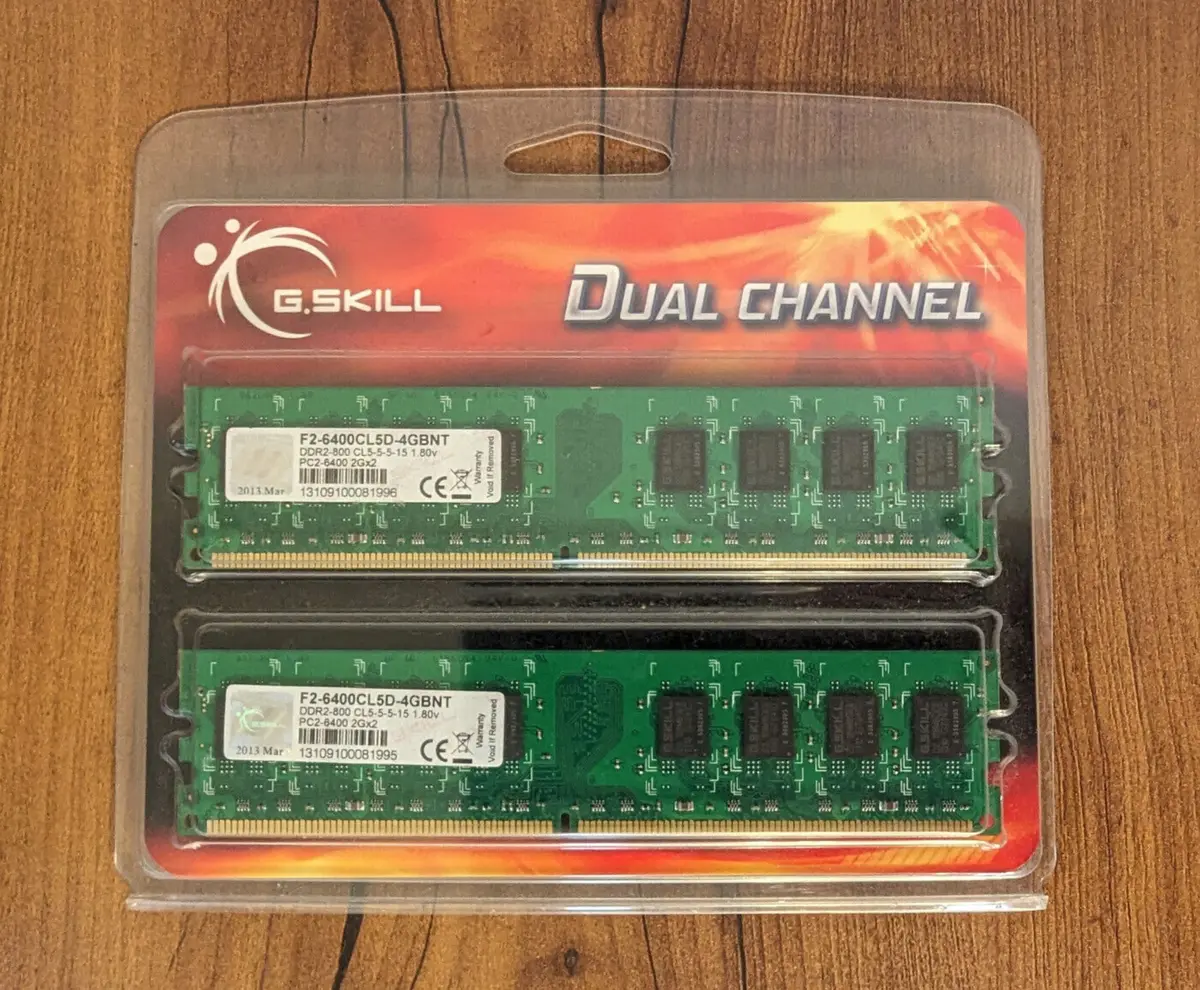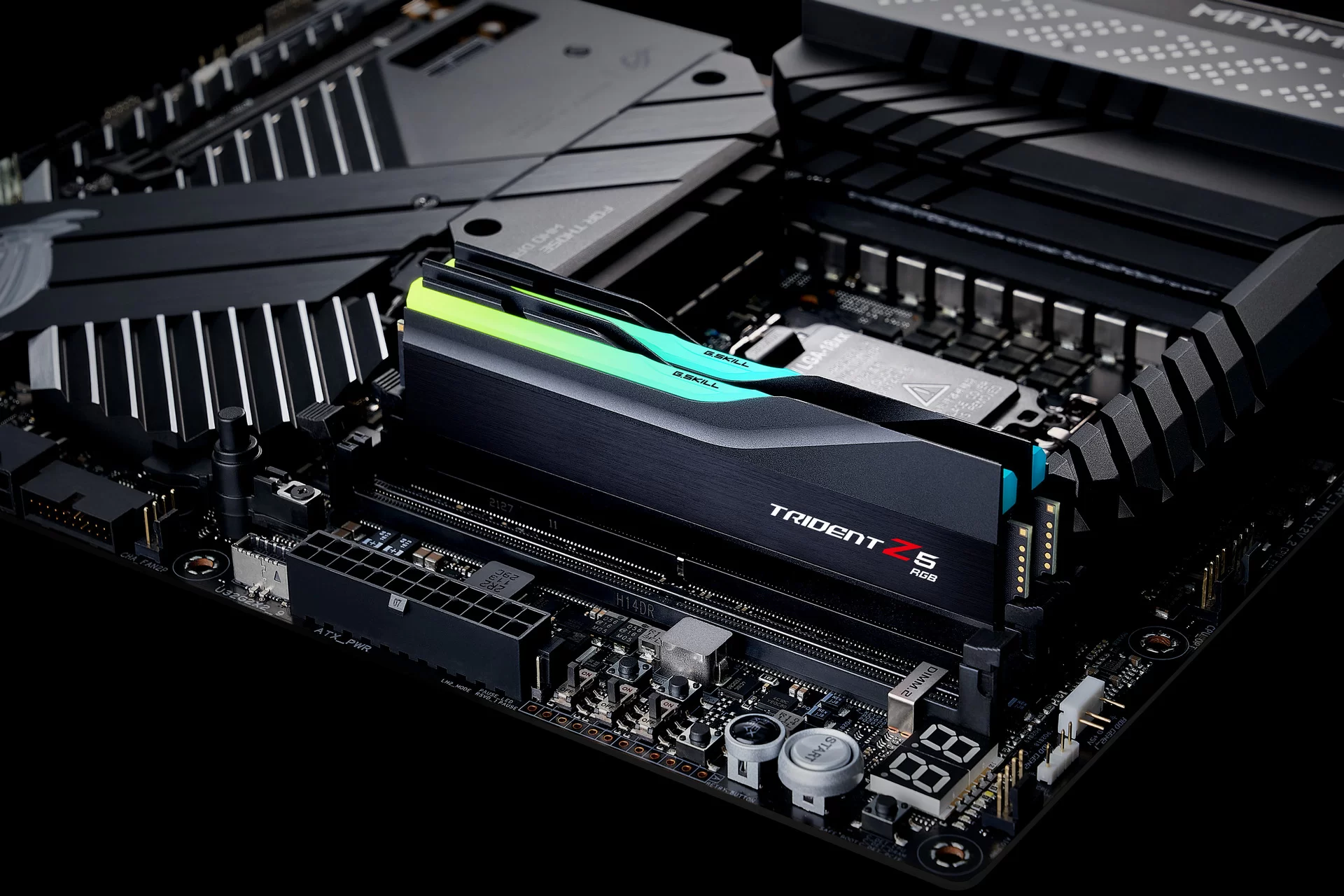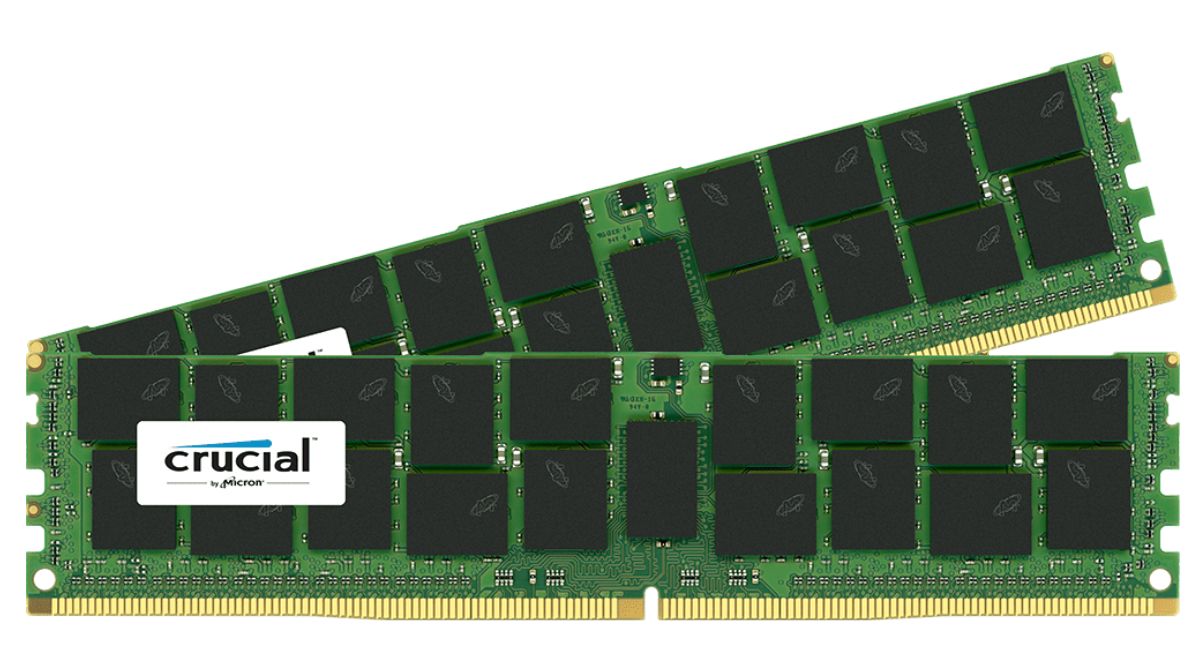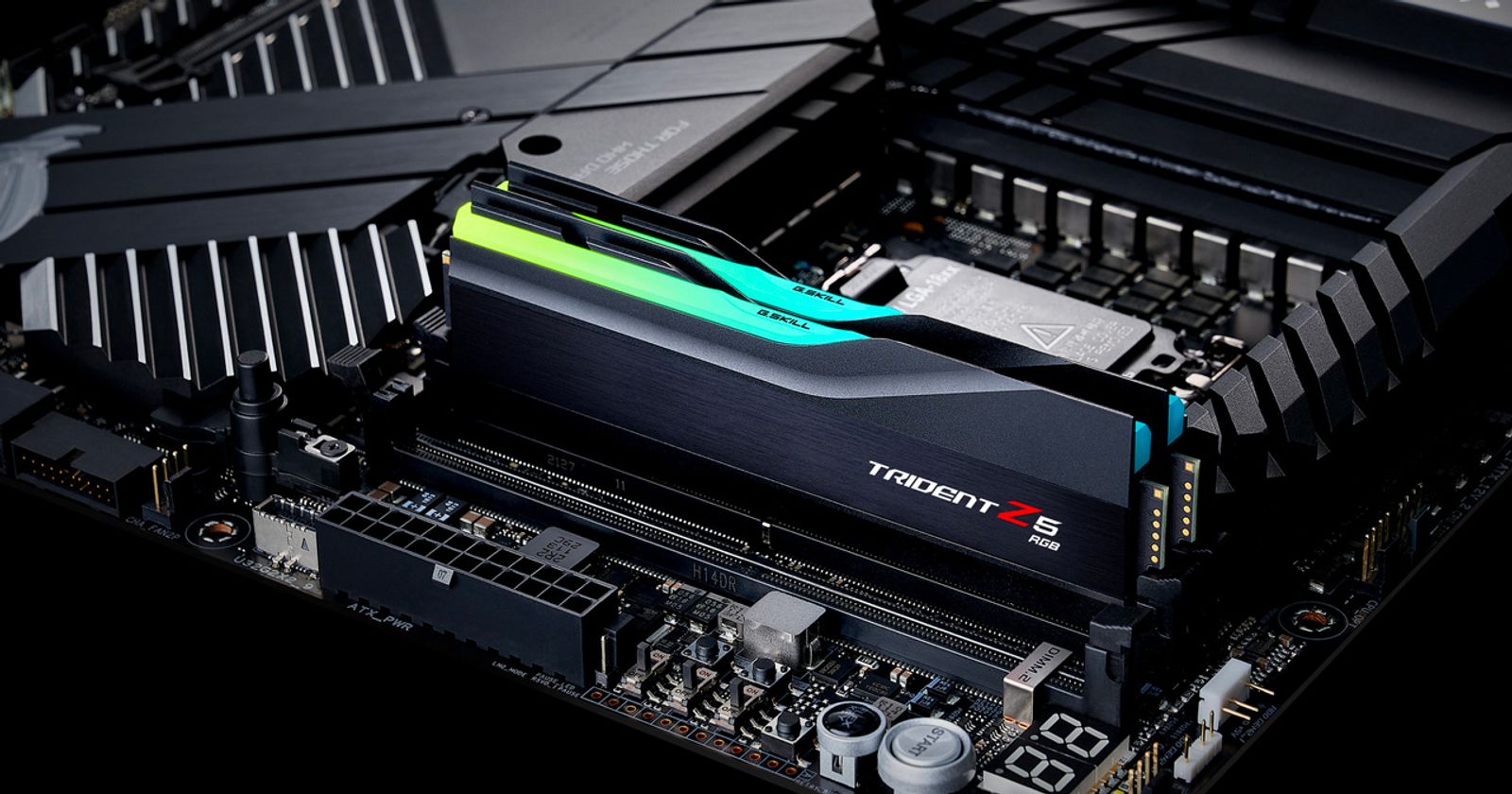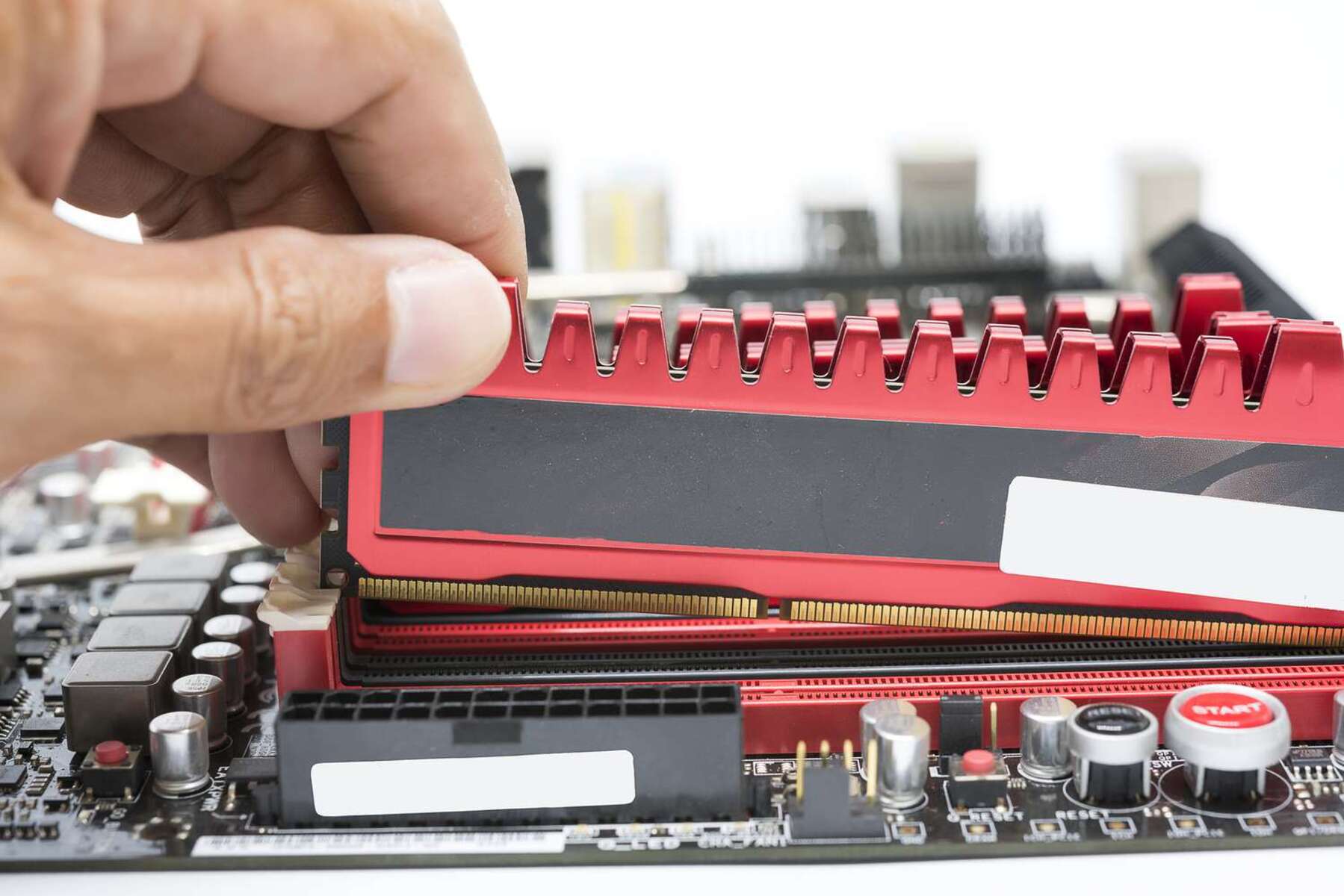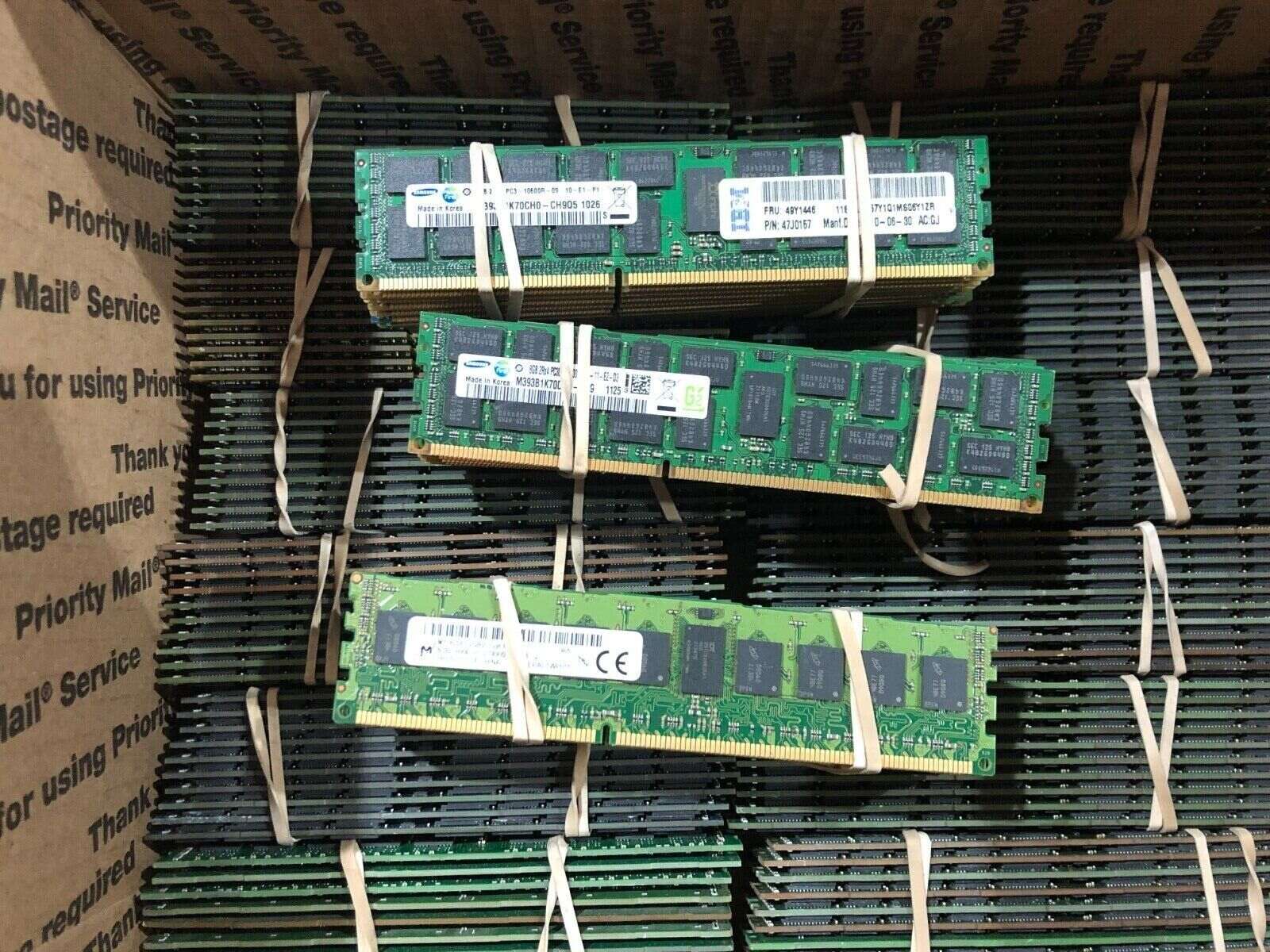Introduction
Welcome to the world of DDR RAM! If you’ve ever wondered what this term means and how it affects your computer’s performance, you’ve come to the right place.
DDR RAM, or Double Data Rate Random Access Memory, is a type of computer memory that plays an essential role in the overall performance and speed of your system. It is one of the key components that determine how quickly your computer can access and transfer data.
Whether you’re a tech enthusiast or a casual user, understanding DDR RAM is crucial in making informed decisions when it comes to upgrading your computer’s memory. In this article, we will explore the ins and outs of DDR RAM, including how it works, its benefits, different types available, and how to choose and install the right DDR RAM for your needs.
So, if you’re ready to delve into the world of DDR RAM and unlock the potential for enhanced performance, let’s get started!
What is DDR RAM?
DDR RAM, which stands for Double Data Rate Random Access Memory, is a type of computer memory that allows data to be stored and accessed rapidly. It is an essential component in modern computer systems, enabling smooth multitasking, faster data processing, and improved overall performance.
DDR RAM differs from its predecessor, SDR (Single Data Rate) RAM, by utilizing both the rising and falling edges of the system clock to transfer data. This dual-edge technology effectively doubles the data transfer rate compared to SDR RAM, hence the name Double Data Rate.
The capacity of DDR RAM modules typically ranges from 1GB to 32GB, although higher capacities are becoming more common as technology advances. The most popular form factor for DDR RAM is the DIMM (Dual In-Line Memory Module), which is a small circuit board that plugs into the memory slots on a computer’s motherboard.
One of the key features of DDR RAM is its speed, which is expressed in MHz (megahertz). The speed determines how fast data can be read from or written to the RAM module. Higher MHz ratings indicate faster performance, allowing for quicker data transfers and smoother overall system operation.
It’s important to note that DDR RAM is not compatible with older SDR RAM slots due to differences in their signaling and voltage requirements. This means that if your computer uses DDR RAM, you cannot insert SDR RAM modules into the memory slots, and vice versa.
DDR RAM has undergone several generations of advancements, with each generation offering increased speed and efficiency. The most common types of DDR RAM are DDR1, DDR2, DDR3, and DDR4, with DDR5 on the horizon. Each generation introduces improvements in data transfer rates, power consumption, and overall performance.
Overall, DDR RAM is a crucial component in any modern computer system, as it determines the speed and efficiency of data processing. Understanding the basics of DDR RAM is key to making informed decisions when upgrading or building a computer, ensuring a seamless and responsive computing experience.
How does DDR RAM work?
DDR RAM operates using a synchronous interface, meaning that it is synchronized with the computer’s system clock. This synchronization ensures that data is transferred in a coordinated and efficient manner, maximizing the overall performance of the system.
When data needs to be read from or written to DDR RAM, the computer sends electrical signals called memory addresses to the RAM module. These addresses specify the location of the data within the memory module. The memory controller, which is a part of the computer’s chipset, manages the transfer of data between the RAM and other components of the computer.
DDR RAM uses a technique called double pumping to transfer data. It transfers data on both the rising and falling edges of the system clock, effectively doubling the data transfer rate compared to SDR RAM. This enables DDR RAM to process and move data at a faster pace, resulting in improved overall system performance.
DDR RAM modules are organized into banks, with each bank containing multiple memory cells. When data is accessed, it is stored in these cells as electrical charges. The cells are organized in rows and columns, and the memory controller determines which rows and columns to access based on the memory addresses.
DDR RAM also employs a technique called burst transfer, where multiple data values are accessed in a consecutive manner once the initial data value is retrieved. This allows for efficient data retrieval and reduces the number of memory accesses required, further enhancing the performance of the RAM module.
Furthermore, DDR RAM utilizes a technique called “double-sided module” to maximize the module’s capacity. This means that memory chips are installed on both sides of the module, effectively doubling the amount of memory in a single physical module.
It’s important to note that DDR RAM operates at different frequencies or clock speeds, such as DDR4-3200 or DDR3-1600. The frequency, measured in megahertz (MHz), determines how many data transfers can occur within a single second. Higher frequencies result in faster data transfer rates and improved overall performance.
In summary, DDR RAM operates using a synchronous interface, with data transferred on both the rising and falling edges of the system clock. It utilizes banks and burst transfers to efficiently access and process data. By understanding how DDR RAM works, you can appreciate its importance in achieving fast and responsive computing experiences.
Benefits of DDR RAM
DDR RAM offers several key benefits that make it an integral part of modern computer systems. Let’s take a closer look at some of the advantages of using DDR RAM:
1. Improved Performance: DDR RAM’s double data rate technology allows for faster data transfer rates compared to its predecessors. This leads to shorter data access times, quicker response times, and overall improved system performance. DDR RAM enables computers to handle demanding tasks, such as gaming or video editing, with ease.
2. Enhanced Multitasking: With its high data transfer rates, DDR RAM enables efficient multitasking by allowing the computer to quickly switch between different applications or processes. This means you can run multiple programs simultaneously without experiencing significant slowdowns or lag.
3. Greater Bandwidth: DDR RAM offers increased bandwidth, which refers to the amount of data that can be transferred between the RAM module and other components in a given amount of time. The higher the bandwidth, the more smoothly data can be processed, resulting in enhanced system performance.
4. Energy Efficiency: DDR RAM consumes less power compared to older RAM types, such as DDR2 or DDR3. This energy efficiency not only reduces the overall power consumption of the computer but also generates less heat. As a result, DDR RAM contributes to a cooler and more reliable system.
5. Wide Compatibility: DDR RAM is widely supported by current computer systems, making it compatible with various motherboards and processors. This allows for easy upgrades or replacements, ensuring that you can take advantage of the benefits of DDR RAM without compatibility issues.
6. Scalability: DDR RAM offers scalability options, allowing you to increase your computer’s memory capacity as your needs grow. Whether you need additional RAM for intense gaming, resource-intensive applications, or multimedia tasks, DDR RAM provides flexible options to accommodate your requirements.
Overall, DDR RAM provides significant performance advantages, enabling faster data transfer rates, improved multitasking capabilities, and energy efficiency. Its compatibility and scalability make it a reliable choice for upgrading or building a computer system.
Different types of DDR RAM
DDR RAM has evolved over the years, with each new generation introducing improvements in performance, speed, and efficiency. Here are the different types of DDR RAM:
1. DDR1: DDR1 was the first commercially available DDR RAM type. It operates at speeds ranging from 100MHz to 200MHz and has a 64-bit data bus. Although it is an older technology, DDR1 RAM may still be found in some older systems or specialized applications.
2. DDR2: DDR2 RAM improved upon the speed and performance of DDR1. It operates at speeds ranging from 400MHz to 1066MHz and has a 64-bit or 128-bit data bus. DDR2 RAM is more energy-efficient and provides better bandwidth compared to DDR1, making it a popular choice for mid-range systems.
3. DDR3: DDR3 RAM offers higher data transfer rates and lower power consumption compared to its predecessors. It operates at speeds ranging from 800MHz to 2133MHz and supports memory modules with densities up to 16GB. DDR3 RAM is commonly used in mainstream computer systems and offers improved performance for gaming and multimedia applications.
4. DDR4: DDR4 RAM represents the current standard in DDR memory technology. It operates at speeds ranging from 2133MHz to 3200MHz and supports memory modules with capacities up to 128GB. DDR4 RAM offers higher data transfer rates, increased bandwidth, and lower power consumption compared to DDR3, making it ideal for high-performance systems and professional applications.
5. DDR5 (upcoming): DDR5 RAM is the next generation of DDR memory, set to offer further advancements in speed, capacity, and efficiency. Expected to debut soon, DDR5 RAM is anticipated to provide even higher data transfer rates and increased memory densities, pushing the boundaries of performance in cutting-edge computer systems.
When choosing DDR RAM, it’s important to ensure compatibility with your motherboard and processor. Each type of DDR RAM has a specific notch location and voltage requirement, so it’s crucial to select the appropriate RAM type supported by your system.
Remember that higher generations of DDR RAM, such as DDR3 or DDR4, offer superior performance and better power efficiency compared to older generations like DDR1 or DDR2. It’s recommended to choose the latest generation that your system supports to benefit from the latest advancements in memory technology.
In summary, DDR RAM has evolved through several generations, with each type offering improvements in speed, performance, and energy efficiency. Understanding the different types of DDR RAM will help you make informed decisions when upgrading or building a computer system.
DDR RAM vs other types of RAM
When it comes to computer memory, DDR RAM stands out as one of the most prevalent and widely used types. However, it’s important to understand how DDR RAM compares to other types of RAM in order to make informed decisions regarding your computer’s memory needs. Let’s explore the differences between DDR RAM and other types of RAM:
1. SDR RAM: Single Data Rate (SDR) RAM was the predecessor to DDR RAM. SDR RAM transfers data on only the rising edge of the system clock, while DDR RAM transfers data on both the rising and falling edges. This means that DDR RAM offers higher data transfer rates and improved performance compared to SDR RAM. As a result, DDR RAM has replaced SDR RAM in most modern computer systems.
2. DDR RAM vs. DDR2 RAM: DDR2 RAM improved upon the speed and performance of DDR RAM by enhancing memory module densities and bus speeds. DDR2 RAM operates at higher frequencies and provides higher bandwidth compared to DDR RAM. This means that DDR2 RAM offers improved overall performance and is suitable for mid-range computer systems. DDR2 RAM is backward compatible, enabling it to work in DDR RAM slots, but DDR RAM is not compatible with DDR2 RAM slots.
3. DDR2 RAM vs. DDR3 RAM: DDR3 RAM represented another significant leap in performance and efficiency compared to DDR2 RAM. DDR3 RAM operates at higher frequencies and has lower operating voltages, resulting in reduced power consumption. Additionally, DDR3 RAM offers increased bandwidth and improved overall performance compared to DDR2 RAM. DDR3 RAM is not compatible with DDR2 RAM slots, and DDR2 RAM is not compatible with DDR3 RAM slots.
4. DDR3 RAM vs. DDR4 RAM: DDR4 RAM is the current standard in DDR memory technology and provides several improvements over DDR3 RAM. DDR4 RAM operates at even higher frequencies, offering faster data transfer rates and increased bandwidth. It also requires lower operating voltages, resulting in improved energy efficiency compared to DDR3 RAM. Additionally, DDR4 RAM supports higher memory module densities, enabling systems to have larger RAM capacities. DDR4 RAM is not compatible with DDR3 RAM slots, and DDR3 RAM is not compatible with DDR4 RAM slots.
It’s important to note that when upgrading your computer’s memory, it is crucial to ensure compatibility between the RAM type, the motherboard, and the processor. Different generations of RAM require specific slots, voltage levels, and memory controllers. Installing incompatible RAM can result in system instability or failure to boot.
In summary, DDR RAM has surpassed older types of RAM, such as SDR RAM, in terms of speed, performance, and efficiency. Each subsequent generation of DDR RAM, from DDR2 to DDR3 to DDR4, has provided further advancements in terms of speed, bandwidth, and power consumption. When selecting RAM, it is essential to consider the compatibility with your system’s hardware and choose the appropriate RAM type that meets your performance needs.
Choosing the right DDR RAM for your computer
Choosing the right DDR RAM for your computer is crucial to ensure optimal performance and compatibility. Here are some factors to consider when selecting DDR RAM:
1. Determine the DDR generation: First, identify the DDR generation supported by your computer’s motherboard. Check the motherboard’s specifications or consult the manufacturer’s website to find out if it is compatible with DDR2, DDR3, or DDR4 RAM.
2. Understand the motherboard’s memory specifications: Review the motherboard’s manual or specifications to determine the supported DDR RAM speeds, memory module capacities, and the number of memory slots available. This will help you choose RAM modules that are compatible and can take full advantage of your system’s capabilities.
3. Consider your computer’s usage: Determine the intended use of your computer. If you plan on running resource-intensive applications or engaging in gaming, opt for higher-speed DDR RAM modules for improved performance. For general computing tasks, such as web browsing and office applications, lower-speed DDR RAM modules may suffice.
4. Check CAS latency: CAS (Column Address Strobe) latency is a measure of the delay between sending a column address and the start of data output. Lower CAS latency values indicate faster response times and improved overall RAM performance. Consider choosing DDR RAM modules with lower CAS latency for optimal performance.
5. Consider memory capacity: Assess your computer’s memory requirements based on your workflow and the applications you plan to run. If you frequently multitask or work with memory-demanding software, consider higher-capacity DDR RAM modules for smoother performance. However, keep in mind that the motherboard must support the desired memory capacity.
6. Budget considerations: DDR RAM prices vary based on the generation, speed, and capacity of the modules. Determine your budget and strike a balance between performance and cost. Consider future upgradability as well, as it may be more cost-effective to invest in higher-capacity modules upfront if you plan to expand your system’s RAM in the future.
7. Seek reputable brands: Choose DDR RAM modules from well-known and trusted manufacturers. Reputable brands often offer reliable performance, compatibility, and warranties to ensure your investment is protected.
8. Consider energy efficiency: If power consumption and heat dissipation are concerns, opt for DDR RAM modules with lower operating voltages. Lower voltage modules not only help reduce energy usage but also contribute to a cooler and more stable system.
By considering these factors and selecting DDR RAM modules that meet your system’s requirements, you can ensure a seamless and optimized computing experience for your specific needs.
Installing DDR RAM
Installing DDR RAM in your computer is a straightforward process, but it requires careful handling to avoid any damage. Here are the steps to install DDR RAM:
1. Power off your computer: Before installing or removing any components, make sure to power off your computer and unplug the power cord from the wall outlet. This will ensure your safety and prevent any potential damage to the system.
2. Open the computer case: Remove the screws or latch that secure the computer case and gently slide off the side panel. This will expose the motherboard and the existing RAM slots.
3. Locate the RAM slots: Identify the RAM slots on the motherboard. They are typically long, rectangular slots near the CPU socket. Each RAM slot is accompanied by a locking mechanism on either side.
4. Release the locking mechanism: Gently push out the tabs on either side of the RAM slot to release the locking mechanism. This will allow the existing RAM module to be removed or a new one to be inserted.
5. Remove or insert the RAM module: If you are replacing an existing RAM module, gently hold onto the sides and pull it straight out of the slot. If you are inserting a new RAM module, align the notch on the module with the corresponding notch in the RAM slot and insert it at a slight angle. Apply firm and even pressure on both sides of the module until it clicks into place. Ensure that the module is fully seated and the locking mechanism engages.
6. Repeat for additional modules (if applicable): If you are installing multiple RAM modules, repeat the previous step for each module. Most motherboards have multiple RAM slots, allowing you to install RAM in pairs or even quad-channel configurations for enhanced performance.
7. Close the computer case: Gently slide the side panel back into place and secure it with screws or latches. Make sure the panel is firmly in position to avoid any loose connections or potential damage to the components.
8. Power on the computer: Once the RAM modules are securely installed, reconnect the power cord to the back of the computer and power it on. The computer should recognize the new RAM modules during the boot up process. If necessary, you may need to enter the BIOS or UEFI settings to ensure the RAM is recognized and configured correctly.
Remember to consult your computer’s manual or the motherboard manufacturer’s instructions for any specific guidelines or recommendations when it comes to installing or upgrading RAM. It’s also important to handle RAM modules with care, avoiding excessive force or touching the metal contacts.
By following these steps, you can successfully install DDR RAM into your computer, boosting its memory capacity and potentially improving overall system performance.
Troubleshooting common DDR RAM issues
While DDR RAM is generally reliable, certain issues may arise during or after installation. Understanding common DDR RAM issues can help you troubleshoot and resolve any problems you may encounter. Here are some common DDR RAM issues and their solutions:
1. System instability or crashes: If your computer experiences frequent crashes, freezes, or random reboots after installing new DDR RAM, it could indicate compatibility issues or faulty modules. Start by ensuring that the RAM modules are correctly installed in their respective slots. If the problem persists, try testing the RAM modules individually or in different combinations to identify any faulty modules. Additionally, check for BIOS updates or consult the motherboard’s manual for any specific RAM configuration settings.
2. Inadequate memory recognized: If your computer is not recognizing the full capacity of installed RAM, it may be due to a limitation in the operating system or a mismatch between the RAM modules. Ensure that your operating system supports the capacity of the RAM you installed. Also, ensure that you have installed the RAM modules in the correct slots and that the modules are of the same capacity and speed.
3. Blue Screen of Death (BSOD) errors: If your computer crashes and displays a blue screen with error messages, it may indicate compatibility issues, faulty RAM modules, or conflicting hardware drivers. Start by checking for any BIOS updates and installing the latest drivers for your hardware components. If the issue persists, test the RAM modules individually or in different slots to determine if any particular module is causing the problem.
4. Memory-related error messages: If you encounter error messages related to memory or RAM, such as “Memory Management” or “Page Fault in Nonpaged Area,” it may indicate RAM issues. Test the RAM modules individually or in different combinations to identify any faulty modules. Additionally, you can run memory diagnostic tools, such as Memtest86, to thoroughly test the RAM for errors.
5. RAM module not recognized: If your computer fails to recognize a newly installed RAM module, ensure that the module is securely seated in the slot and the locking mechanism is engaged properly. If the issue persists, try cleaning the gold contacts on the module with a soft, lint-free cloth. In some cases, the RAM slot itself may be faulty, requiring further troubleshooting or potentially replacing the motherboard.
6. Overheating issues: DDR RAM can generate heat during normal operation, and insufficient cooling can lead to instability or system crashes. Ensure that your computer has adequate airflow and cooling, including proper positioning of fans, clean air vents, and possibly adding additional cooling solutions like aftermarket CPU coolers or case fans.
If you’re experiencing DDR RAM issues and are unsure of the cause, consulting a computer technician or contacting the manufacturer’s support can provide additional guidance and assistance in resolving the problem.
By identifying and troubleshooting common DDR RAM issues, you can ensure optimal performance and address any memory-related problems effectively.
Conclusion
DDR RAM plays a crucial role in the speed, performance, and overall functionality of modern computer systems. Understanding the basics of DDR RAM, including its operation, benefits, and different generations, allows you to make informed decisions when upgrading or building a computer.
We explored how DDR RAM works, utilizing its dual-edge transfer technology, burst transfers, and organization into banks. We also discussed the benefits of DDR RAM, such as improved performance, enhanced multitasking capabilities, and energy efficiency.
Furthermore, we compared DDR RAM to other types of RAM, such as SDR RAM, DDR2 RAM, DDR3 RAM, and DDR4 RAM, highlighting the advancements in speed, power efficiency, and compatibility offered by DDR RAM.
Choosing the right DDR RAM for your computer involves considering factors like DDR generation, memory specifications, computer usage, CAS latency, memory capacity, budget, and reputable brands. By making the right choices, you can ensure optimal performance that meets your specific needs.
We also discussed the process of installing DDR RAM, emphasizing the importance of proper handling and ensuring compatibility with your motherboard and processor. Additionally, we addressed common DDR RAM issues and provided troubleshooting tips to resolve them.
Upgrading your computer’s DDR RAM can significantly enhance its performance and productivity. Whether you’re a gamer, creative professional, or casual user, upgrading to the appropriate DDR RAM ensures a smoother and more responsive computing experience.
So, take the leap and unleash the full potential of your computer with DDR RAM, and enjoy the benefits of improved performance, faster data transfer rates, and efficient multitasking.







